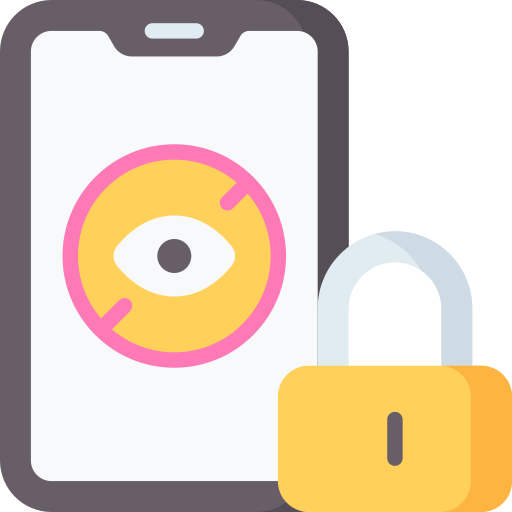Understanding the Risks: Exploring the dangers children face online
Children today are immersed in a digital world, where the internet provides them with countless opportunities to explore and connect. However, along with these benefits come numerous risks and dangers. One of the main concerns is the presence of online predators who specifically target children. These predators often disguise themselves as peers, gaining the trust of unsuspecting children before luring them into harmful situations. Additionally, children may also be exposed to explicit or age-inappropriate content, cyberbullying, or be coerced into sharing personal information. The risks are real and ever-present, making it crucial for parents and caregivers to educate themselves and actively protect their children from the potential dangers of the online world.
In recent years, numerous cases of child exploitation and abduction have been attributed to online activities. This highlights the urgent need for parents to understand the risks and dangers that their children face online. Children’s innocence and curiosity may make them vulnerable to manipulative tactics employed by online predators. By being aware of these risks, parents can take necessary steps to ensure their child’s safety in the digital realm. It is essential to recognize that while the internet can be a valuable resource for learning and entertainment, it is equally imperative to be cautious and vigilant about the potential harm that lurks behind the screen.
The Role of Parental Control: How it can help protect children from online predators
Parental control plays a vital role in safeguarding children from the threats posed by online predators. By implementing effective control mechanisms, parents can actively monitor their child’s online activities and ensure their safety. This includes setting limits on the websites they can access, the duration of their online sessions, and the people they can communicate with.
One of the key features of parental control is content filtering. By blocking inappropriate content and websites, parents can prevent their children from accessing potentially harmful material. Additionally, monitoring tools enable parents to track their child’s online interactions, allowing them to identify any suspicious behavior or instances of grooming. By leveraging these control measures, parents can create a secure online environment that minimizes the risk of online predation.
Age-Appropriate Online Activities: Creating boundaries and setting limits
When it comes to age-appropriate online activities, creating boundaries and setting limits is crucial to ensure the safety of your child. The internet offers a vast array of content, both educational and entertaining, but not all of it may be suitable for your child’s age group. By establishing clear guidelines, you can help protect them from potentially harmful or inappropriate material.
To begin, it is essential to understand your child’s developmental stage and tailor their online activities accordingly. Younger children may benefit from interactive educational websites or supervised video viewing, while teenagers may engage in social media platforms or online gaming communities. It is important to strike a balance between their interests and ensuring their online experiences are safe. Setting limits on screen time and regulating the types of websites, apps, or games they can access can help maintain control and minimize potential risks. By being proactive in creating boundaries, you can create a safe online environment that supports your child’s growth and development.
Open Communication: Fostering trust and discussing online safety with your child
One of the most crucial aspects of protecting children from online dangers is fostering open communication and building trust with them. It is important to create an environment where children feel comfortable discussing their online experiences and concerns without fear of judgment or punishment. By establishing this foundation of trust, parents can better understand their child’s online activities and address potential risks accordingly.
Initiating conversations about online safety can be a proactive approach to ensure that children are equipped with the necessary knowledge and skills to navigate the digital world safely. Parents can start by discussing the importance of privacy and regularly reminding children not to share personal information online. Encouraging open discussions about any concerning encounters or suspicious behavior encountered online is also essential. By keeping lines of communication open, parents can better guide their children in recognizing potential red flags and taking appropriate actions to stay safe.
Monitoring Online Interactions: Being aware of your child’s online presence
It is crucial for parents to be vigilant and have a clear understanding of their child’s online interactions. With the ever-expanding digital landscape, it is important to keep an eye on who their children are connecting with online and what they are doing. By actively monitoring their online presence, parents can ensure that their children are engaging in safe and appropriate activities on the internet.
One way to stay informed is by having open conversations with your child about their online interactions. Encourage them to share their experiences and disclose any potential concerns they may have. This will not only help you stay updated but will also create a sense of trust and open communication between you and your child. Additionally, setting boundaries and guidelines for online behavior can help instill a sense of responsibility and accountability in your child when using the internet. By regularly reviewing their online activities, you can ensure that they are adhering to these guidelines and identify any potential risks or red flags.
Educating Children: Teaching them about privacy, sharing personal information, and recognizing red flags
Teaching children about privacy, sharing personal information, and recognizing red flags is crucial in today’s digital age. As they navigate the online world, children need to understand the importance of safeguarding their personal information and being cautious about what they share with others. Educating them about the potential risks and consequences of sharing sensitive data can help instill a sense of responsibility and empower them to make informed decisions.
One effective strategy is to teach children to think critically and question requests for personal information. Encourage them to ask themselves why someone would need certain details, such as their full name, address, or phone number. Teach them that it is okay to be cautious and to talk to a trusted adult if they are unsure about sharing personal information online. By fostering these important conversations, you can help children develop a healthy skepticism and empower them to protect their privacy online.
Encouraging Critical Thinking: Developing skills to identify suspicious behavior
In today’s digital age, it is vital for children to develop critical thinking skills to identify and protect themselves from suspicious online behavior. One way to encourage these skills is by teaching children to be skeptical of unfamiliar individuals they encounter online. Emphasize the importance of questioning motives and intentions behind friend requests or messages from unknown individuals. Instilling a sense of skepticism can help children recognize potential red flags and exercise caution when engaging with strangers online.
Furthermore, educating children about the importance of evaluating online information can enhance their critical thinking abilities. Teach them to verify the credibility of websites and sources before accepting the information presented as fact. Encourage them to question the validity of suspicious claims, such as promises of easy money or unsolicited requests for personal information. By teaching children to approach online interactions and information with a discerning eye, they can become more resilient against deceptive tactics used by online predators.
Establishing Online Boundaries: Setting rules and guidelines for safe online behavior
In today’s digital age, it is crucial for parents to establish online boundaries and set rules and guidelines for their child’s safe online behavior. The Internet can be a wonderful tool for learning and connecting with others, but it also exposes children to potential risks and dangers. By creating clear boundaries, parents can help protect their children from online predators and harmful content.
Setting rules around internet usage is the first step in establishing online boundaries. Parents should establish age-appropriate time limits for screen time and set expectations for what types of websites and platforms are allowed. It is important to explain to children the reasons behind these rules and emphasize the importance of online safety. Additionally, parents should regularly monitor their child’s online activities to ensure they are adhering to the established guidelines and address any concerns that may arise. By setting these boundaries, parents can empower their children to navigate the online world responsibly and confidently.
Recognizing Warning Signs: Understanding potential signs of grooming or predatory behavior
Recognizing warning signs is crucial to protecting children from online predation. There are specific behaviors and patterns that may indicate grooming or predatory behavior. For example, if your child suddenly becomes secretive about their online activities or displays a sudden change in behavior, such as becoming withdrawn or anxious, it could be a red flag. Other warning signs may include receiving gifts or money from an online stranger, excessive sharing of personal information, or engaging in sexually explicit conversations. It is important to be vigilant and attentive to any unusual or concerning behavior displayed by your child when they are online.
Another indicator of potential grooming or predatory behavior is when an online contact seeks to isolate and control your child. This can manifest as a gradual separation from friends and family or a sudden reliance on the online contact for emotional support. Other warning signs may include attempts to manipulate or exploit your child, such as by pressuring them into sharing personal photos or engaging in inappropriate conversations. It is essential for parents to be aware of these signs, as they can help to identify and address potentially dangerous situations before they escalate.
Seeking Help and Support: Resources available for parents and children in cases of online predation.
When faced with instances of online predation, it is essential for parents and children to know that there are resources available to provide the necessary help and support. One such resource is the National Center for Missing & Exploited Children (NCMEC), which operates a hotline specifically for reporting suspected child sexual exploitation. By contacting the NCMEC CyberTipline, parents can report online incidents and receive guidance on next steps to ensure the safety of their child. Additionally, many local law enforcement agencies have specialized units dedicated to investigating and preventing online predation. These agencies can provide assistance and resources to families who encounter such situations.
In addition to external resources, parents and children can also turn to online platforms and communities for support. There are numerous organizations that offer online safety education and awareness programs, such as the Internet Keep Safe Coalition and the Family Online Safety Institute. These organizations provide valuable information, tips, and resources to empower parents and children to navigate the digital world in a safe and responsible manner. Online forums and chat groups can also serve as spaces for parents to connect with others who have undergone similar experiences and seek advice or share strategies for protecting their children online.
What are some dangers children face online?
Children face various risks online, including cyberbullying, exposure to inappropriate content, online grooming, and identity theft.
How can parental control help protect children from online predators?
Parental control software can limit access to certain websites, monitor online activities, and block inappropriate content, helping to create a safer online environment for children.
How should parents create boundaries and set limits for age-appropriate online activities?
Parents should consider their child’s age and maturity level when determining the type and amount of online activities allowed. It is important to establish rules regarding screen time, social media usage, and online interactions.
How can parents foster trust and discuss online safety with their child?
Open communication is key. Parents should create a safe space for their child to talk about their online experiences, educate them about potential risks, and encourage them to come forward if they encounter any issues or suspicious behavior.
Why is it important to monitor a child’s online interactions?
Monitoring online interactions allows parents to be aware of their child’s online presence, identify any potential dangers or red flags, and intervene if necessary to protect their child from online predators or harmful situations.
How can parents educate their children about privacy and recognizing red flags?
Parents should teach their children about the importance of protecting personal information, such as full name, address, and phone number. They should also educate them on the warning signs of grooming or predatory behavior, such as requests for explicit photos or meeting in person.
How can critical thinking skills help children identify suspicious behavior online?
By encouraging critical thinking skills, children can learn to question online interactions, assess the credibility of information, and recognize manipulative or deceitful behavior, which can help them avoid falling victim to online predators.
Why is it important to establish online boundaries and rules?
Setting clear rules and guidelines for safe online behavior helps children understand what is acceptable and what is not. It provides them with a framework to navigate the online world responsibly and safely.
What are some warning signs of grooming or predatory behavior online?
Warning signs may include excessive attention or flattery, requests for personal information, secrecy, attempts to isolate the child, and manipulation or coercion. It is important to be vigilant and recognize these signs to protect children from potential harm.
What resources are available for parents and children in cases of online predation?
There are various resources available, such as helplines, online safety websites, support groups, and organizations that specialize in child protection and online safety. These resources can provide guidance, support, and assistance in cases of online predation.




